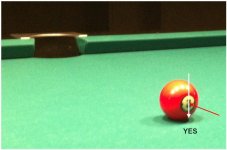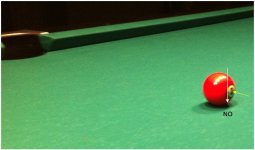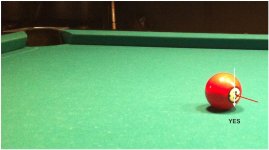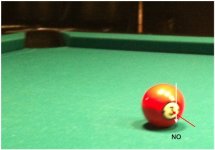Gotta have a counter point.
I've been going to a couple of different rooms near me. They all have different lighting. One place, the light is so diffused, there are no useful shadows. These were the tube style over head lights.
Another room lights have four blub fixture with CFL in them. There are multible shadows on each ball due to four different light sources.
One place, the lights are not always centered over the table which changes how the shadows are cast.
The point is, I'd would much rather use a visualiztion method that can be used in any lighting condition.
FWIW
I've been going to a couple of different rooms near me. They all have different lighting. One place, the light is so diffused, there are no useful shadows. These were the tube style over head lights.
Another room lights have four blub fixture with CFL in them. There are multible shadows on each ball due to four different light sources.
One place, the lights are not always centered over the table which changes how the shadows are cast.
The point is, I'd would much rather use a visualiztion method that can be used in any lighting condition.
FWIW



